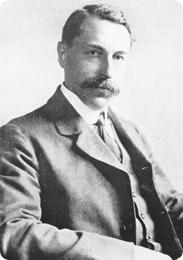Bertram Hopkinson on:
[Wikipedia]
[Google]
[Amazon]
 Bertram Hopkinson (11 January 1874 – 26 August 1918) was a British patent lawyer and Professor of Mechanism and Applied Mechanics at
Bertram Hopkinson (11 January 1874 – 26 August 1918) was a British patent lawyer and Professor of Mechanism and Applied Mechanics at
 Bertram Hopkinson (11 January 1874 – 26 August 1918) was a British patent lawyer and Professor of Mechanism and Applied Mechanics at
Bertram Hopkinson (11 January 1874 – 26 August 1918) was a British patent lawyer and Professor of Mechanism and Applied Mechanics at Cambridge University
, mottoeng = Literal: From here, light and sacred draughts.
Non literal: From this place, we gain enlightenment and precious knowledge.
, established =
, other_name = The Chancellor, Masters and Schola ...
. In this position he researched flames, explosions and metallurgy
Metallurgy is a domain of materials science and engineering that studies the physical and chemical behavior of metallic elements, their inter-metallic compounds, and their mixtures, which are known as alloys.
Metallurgy encompasses both the sc ...
and became a pioneer designer of the internal combustion engine
An internal combustion engine (ICE or IC engine) is a heat engine in which the combustion of a fuel occurs with an oxidizer (usually air) in a combustion chamber that is an integral part of the working fluid flow circuit. In an internal combus ...
.
Hopkinson was born in Birmingham
Birmingham ( ) is a city and metropolitan borough in the metropolitan county of West Midlands in England. It is the second-largest city in the United Kingdom with a population of 1.145 million in the city proper, 2.92 million in the West ...
, in 1874, the son of John Hopkinson
John Hopkinson, FRS, (27 July 1849 – 27 August 1898) was a British physicist, electrical engineer, Fellow of the Royal Society and President of the IEE (now the IET) twice in 1890 and 1896. He invented the three-wire (three-phase) system for ...
, an electrical engineer. He read law at Trinity College, Cambridge
Trinity College is a constituent college of the University of Cambridge. Founded in 1546 by Henry VIII, King Henry VIII, Trinity is one of the largest Cambridge colleges, with the largest financial endowment of any college at either Cambridge ...
, and became a lawyer after his graduation. Following the death of his father, brother and two of his sisters in a mountaineering accident in 1898, Hopkinson switched to a career in engineering instead.
In 1903, Hopkinson was elected to the Cambridge chair in mechanism and applied mechanics, and in 1910 he was elected a Fellow of the Royal Society
Fellowship of the Royal Society (FRS, ForMemRS and HonFRS) is an award granted by the judges of the Royal Society of London to individuals who have made a "substantial contribution to the improvement of natural science, natural knowledge, incl ...
. During World War I
World War I (28 July 1914 11 November 1918), often abbreviated as WWI, was one of the deadliest global conflicts in history. Belligerents included much of Europe, the Russian Empire, the United States, and the Ottoman Empire, with fightin ...
he was commissioned into the Royal Engineers
The Corps of Royal Engineers, usually called the Royal Engineers (RE), and commonly known as the ''Sappers'', is a corps of the British Army. It provides military engineering and other technical support to the British Armed Forces and is heade ...
, and opened a research establishment at Orford Ness
Orford Ness is a cuspate foreland shingle spit on the Suffolk coast in Great Britain, linked to the mainland at Aldeburgh and stretching along the coast to Orford and down to North Weir Point, opposite Shingle Street. It is divided from the m ...
where he and his team researched weapons, sights, and ammunition. In 1915, Hopkinson discovered a similarity relation between the masses of explosive charges and their effects at a given distance. The same similarity relation was discovered independently in 1925 by Karl Julius Cranz in Germany.Cranz, Karl Julius, ''Lehrbuch der Ballistik'' (Berlin: Julius Springer, 1926), vol.2 ("Innere Ballistik"), pp. 174 ff. He learnt to fly and died on 26 August 1918 when his Bristol Fighter crashed en route from Martlesham Heath to London.
He is buried in the Parish of the Ascension Burial Ground in Cambridge, with his wife Mariana, née Siemens; they had seven daughters.
See also
*Split-Hopkinson pressure bar
The split-Hopkinson pressure bar, named after Bertram Hopkinson, sometimes also called a Kolsky bar, is an apparatus for testing the dynamic stress–strain response of materials.
History
The Hopkinson pressure bar was first suggested by Bertra ...
Notes
References
;Secondary sources * *External links
* * Biography at the University of Cambridge * Biography at King's College London 1874 births 1918 deaths People from Birmingham, West Midlands Alumni of Trinity College, Cambridge Professors of engineering (Cambridge, 1875) British automotive engineers English engineers English inventors Fellows of the Royal Society Royal Engineers officers Companions of the Order of St Michael and St George Aviators killed in aviation accidents or incidents in England English aviators Bertram British Army personnel of World War I {{England-engineer-stub